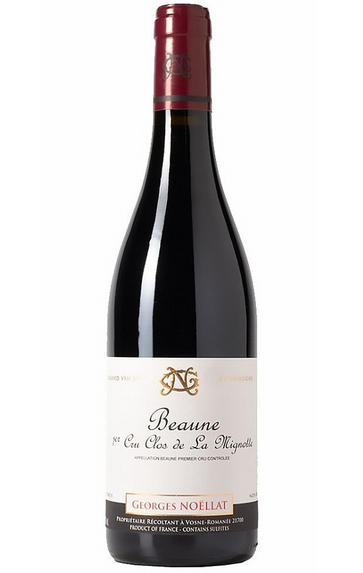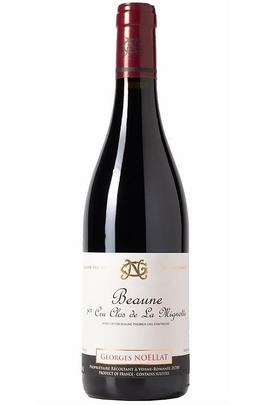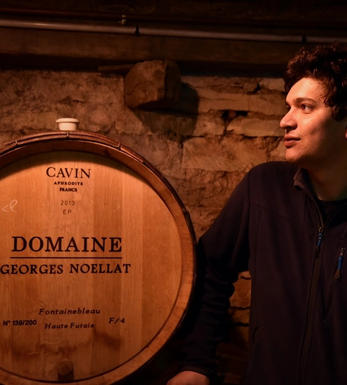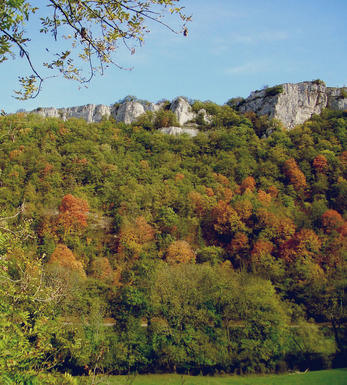
2020 Beaune, Clos de la Mignotte, 1er Cru, Domaine Georges Noëllat, Burgundy

Critics reviews
Deep dark purple. This is one of Maxime’s 2020s which shows a noble balance right from the start. The texture is perfect so is the fruit-acid balance, supported by very fine-grained tannins. There is an effortless density in this wine.
Jasper Morris MW, Inside Burgundy (November 2021)
This tiny .25 ha clos is monopole of the domaine.
There is enough reduction present to push the underlying fruit to the background at present though it is clearly ripe. There is excellent freshness and underlying tension to the nicely concentrated flavours that are at once sleek and seductive on the refreshing finale. This will need to add depth over the next few years to merit the upper end of my projected range.
Drink from 2026 onward
Allen Meadows, Burghound.com (January 2022)
The 2020 Beaune Clos de la Mignotte 1er Cru is a little more ostentatious than the Tuvilains on the nose with cassis and blueberry fruit. The palate is medium-bodied with saturated tannins, quite lush and precocious, sweet though not cloying on the finish. Fine.
Drink 2024 - 2035
Neal Martin, Vinous.com (December 2021)
About this WINE

Domaine Georges Noëllat
Domaine Georges Noëllat, nestled in the heart of Vosne-Romanée, Burgundy, carries a rich history. Georges Noëllat, the nephew of Charles Noëllat, once owned one of Vosne’s most esteemed domaines. Over time, the domaine’s influence extended to Domaines Jean-Jacques Confuron and Hudelot Noëllat, and it even formed the majority of Domaine Leroy. In 2010, the reins passed to Maxime Cheurlin, a young winemaker with a passion for tradition and innovation.
The 5.5-hectare estate encompasses profound terroirs in Vosne-Romanée and northern Nuits-Saint Georges. Maxime inherited ancient vines, their roots deeply embedded in the Burgundian soil. His viticultural approach follows lutte raisonnée, where treatments are judiciously applied only when necessary. These old vines demand special care, and Maxime ensures their preservation.
Maxime’s winemaking philosophy centres on elegance and purity. Grapes are meticulously hand-harvested, often 100% de-stemmed (with occasional whole-cluster inclusion), and cool macerated. The choice of new oak varies, tailored to each appellation and vintage. Ageing occurs over 14 to 20 months, and the wines are typically bottled without fining or filtration.
Wine critics recognise the finesse of Domaine Georges Noëllat’s Pinot Noir. Allen Meadows (Burghound) describes them as “delicate” yet beautifully balanced, reflecting their underlying terroirs. Neal Martin (Vinous) acknowledges the immense potential of Maxime’s winemaking.

Côte de Beaune
With its three musketeers of Chassagne-Montrachet, Puligny-Montrachet and Meursault, alongside the imperial Corton-Charlemagne, the Côte de Beaune is home to the finest Chardonnays in the world. It hosts seven of Burgundy's eight white Grands Crus, along with a single red Grand Cru. Ironically though, much more red wine is made in this southern half of the Côte d'Or than white.
Stretching 30km south past the town of Beaune to Cheilly-lès-Maranges, the Côte de Beaune has a more expansive feel and gentler slopes than the Côte de Nuits. Its finest Chardonnays are characterised by an incomparable intensity and complexity, while its Pinot Noirs generally have softness and finesse as their calling cards. The best reds come from Beaune, Pommard and Volnay, and the powerful Grand Cru of Corton.
As in the Côte de Nuits, the fragmentation of the Côte de Beaune's vineyards brings the single biggest hurdle for any wine lover, namely the unpredictability of its wine. The human factor is paramount, and sadly too many lazy or unscrupulous growers and merchants have produced disappointing wines from some of the region's greatest names, while their more talented and quality-minded neighbours craft exquisite examples from the same terroir. Happily, quality is now higher than it has ever been here and organic and biodynamic methods are increasingly popular – especially amongst the younger generation.
Wines labeled `Beaune' come from the appellation adjoining the town while those labeled Côte de Beaune (red or white) emanate from a group of vineyards on the hill above. Côte de Beaune Villages is a red wine that can be made from a number of lesser, named villages in the region, while Hautes-Côtes de Beaune (mostly red) is produced from vineyards in the hills to the west of the appellation, divided in two by St Romain. These tend to be light yet often fine wines, especially in hot years like 2003 and 2005.

Pinot Noir
Pinot Noir is probably the most frustrating, and at times infuriating, wine grape in the world. However when it is successful, it can produce some of the most sublime wines known to man. This thin-skinned grape which grows in small, tight bunches performs well on well-drained, deepish limestone based subsoils as are found on Burgundy's Côte d'Or.
Pinot Noir is more susceptible than other varieties to over cropping - concentration and varietal character disappear rapidly if yields are excessive and yields as little as 25hl/ha are the norm for some climats of the Côte d`Or.
Because of the thinness of the skins, Pinot Noir wines are lighter in colour, body and tannins. However the best wines have grip, complexity and an intensity of fruit seldom found in wine from other grapes. Young Pinot Noir can smell almost sweet, redolent with freshly crushed raspberries, cherries and redcurrants. When mature, the best wines develop a sensuous, silky mouth feel with the fruit flavours deepening and gamey "sous-bois" nuances emerging.
The best examples are still found in Burgundy, although Pinot Noir`s key role in Champagne should not be forgotten. It is grown throughout the world with notable success in the Carneros and Russian River Valley districts of California, and the Martinborough and Central Otago regions of New Zealand.


Buying options
Add to wishlist
Description
This tiny .25 ha clos is monopole of the domaine.
There is enough reduction present to push the underlying fruit to the background at present though it is clearly ripe. There is excellent freshness and underlying tension to the nicely concentrated flavours that are at once sleek and seductive on the refreshing finale. This will need to add depth over the next few years to merit the upper end of my projected range.
Drink from 2026 onward
Allen Meadows, Burghound.com (January 2022)
wine at a glance
Delivery and quality guarantee